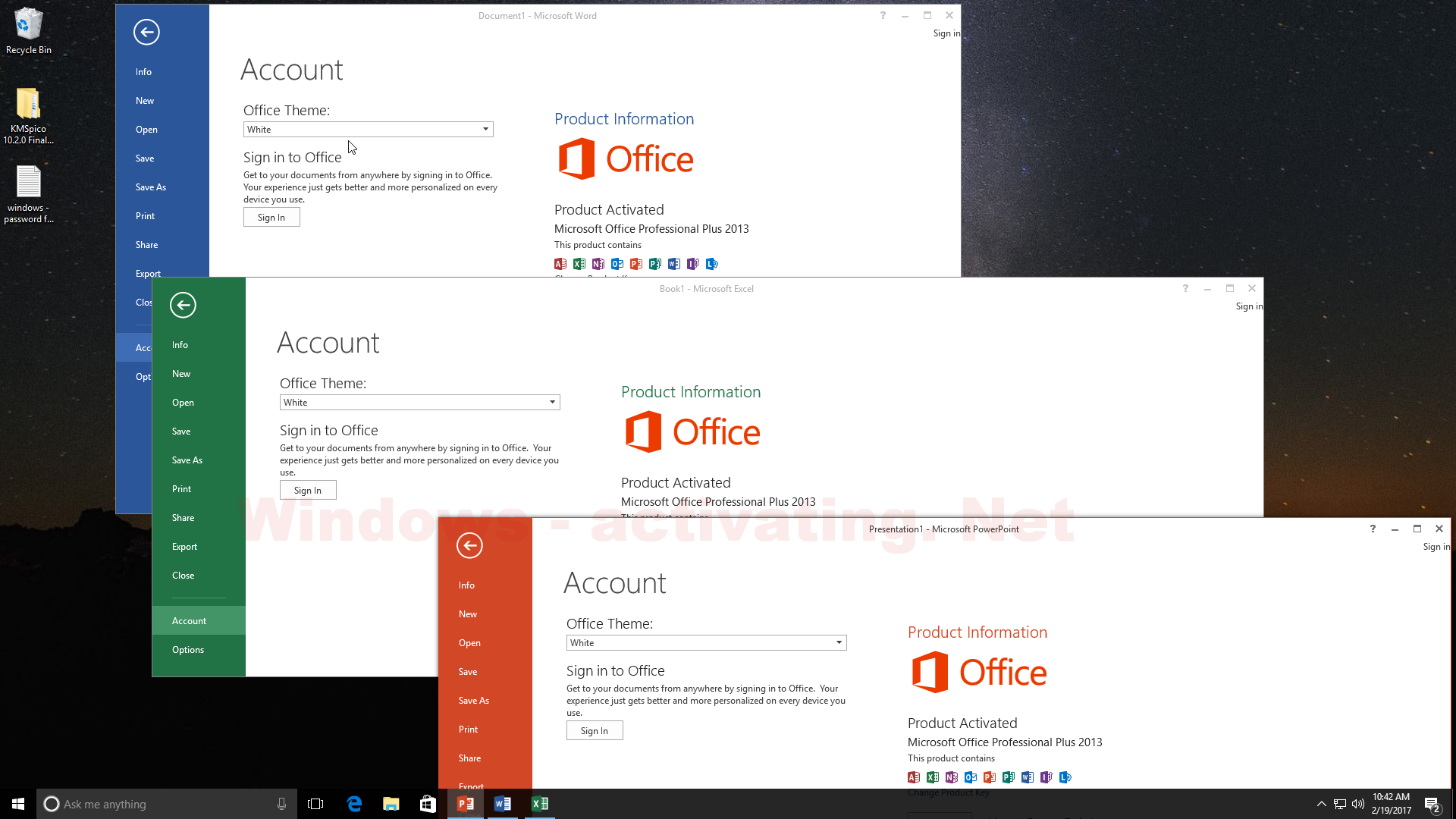INTO permits chosen columns to be saved immediately into variables. If the question returns no rows, a warning with error code 1329 occurs , and the variable values stay unchanged. If it is possible that the statement could retrieve a number of rows, you'll be able to useLIMIT 1 to restrict the outcome set to a single row. The variety of variables must match the variety of columns. If it is possible that the statement could retrieve multiple rows, you ought to use LIMIT 1 to limit the end result set to a single row. With this little trick, you can save your self a while when creating tables. A native short-term desk created in a saved process is dropped automatically when the saved procedure is finished. The table can be referenced by any nested saved procedures executed by the saved procedure that created the table. The desk can't be referenced by the method that called the stored process that created the table. INTO OUTFILE 'file_name' form of SELECT writes the selected rows to a file. The file is created on the server host, so you should have the FILE privilege to use this syntax. File_name cannot be an existing file, which among different issues prevents information such as /etc/passwd and database tables from being modified. The character_set_filesystem system variable controls the interpretation of the file name. The SELECT INTO statement allows us to create a table and populate it with knowledge from an already present desk in a single assertion. While copying the info into the brand new table from the existing old desk we are able to select to copy the entire information or chosen columns from the present table.
It can additionally be potential to create an empty table from an current table without copying any information from it. When the identical is done SELECT INTO just copies the desk structure from the old table to the brand new table. It just replicates the column names, datatype, and knowledge size. It can be attainable to create a new table from a couple of table utilizing SELECT INTO. Each time we have created a new "continued" table in a database. But with the INTO clause you might also create momentary tables. These are tables saved within the tempdb database, and they are deleted once the connection is over. INSERT INTO SELECT assertion reads knowledge from one table and inserts it into an present desk. This technique is used when the desk is not created earlier and needs to be created when knowledge from one desk is to be inserted into the newly created table from another table. The new desk is created with the same information varieties as chosen columns. A SELECT statement retrieves zero or more rows from one or more database tables or database views. In most purposes, SELECT is probably the most commonly used knowledge manipulation language command. As SQL is a declarative programming language, SELECT queries specify a end result set, but do not specify how to calculate it.
The database interprets the query into a "question plan" which may differ between executions, database variations and database software. This performance known as the "query optimizer" as it is liable for finding the finest possible execution plan for the query, inside applicable constraints. This article will explain the complete overview of a SELECT INTO assertion in SQL Server. When we use this statement, it's going to first create a brand new table within the default filegroup before inserting the information chosen by the SELECT statement into that new desk. It is to notice that the constraints from the source desk usually are not copied to the vacation spot table. The fundamental idea behind SELECT … INTO is that you create a model new table utilizing the result set of a SELECT assertion. So, you probably can take any SELECT statement, add the INTO clause and you can create a new table and insert information into it at the identical time! Let's illustrate using the Adventure Works pattern database. At the same time, we are in a position to filter some rows of the Location after which insert the end result set into a short lived desk. The following query filters the rows by which the Name column begins with the "F" character and then inserts the resultsets into the temporary table. One point to notice right here is the temporary desk and supply table column names are the same. In order to alter the column names of the momentary table, we may give aliases to the source table columns within the select question. SQL Server does routinely update statistics, but, by default it's on a method of only updating stats when 500 rows + 20% of current rows have been changed. You can also add WITH FULL SCAN to the UPDATE command to get a complete scan of statistics, not a sampled average. And sure, it makes an enormous distinction in performance as a end result of the optimizer bases most of it is selections on the statistics you provide it.
I set the properties for the SQL Server driver to Don't pool connections to this driver and reran the code. I nonetheless have the problem the place I am unable to create an area short-term desk. In the above syntax, the comfort is that we do not have to define the table definition early on the hand. The momentary desk is created when the select statement is created. However, if the desk already existed within the system, you may not have the ability to create it again and it will present you with an error. We can use the INSERT INTO select statements only when the goal desk exists within the database before copying data from the source to the target table. On the opposite hand, the SELECT INTO statement does not require a goal desk to exist in our database before copying data from the source table. It routinely creates a target desk every time executed. A native temp desk solely exists for the connection that created it. Because it could be attainable for multiple connections to create temp tables with the same name, a suffix is added to the native temp desk in tempdb. Because it creates the desk as part of the statement.3WHERE Condition? In this text, we now have learned the syntax and utilization details of the SELECT INTO TEMP TABLE assertion. This assertion could be very practical to insert desk information or question knowledge into the temporary tables. In earlier sections, we explored that we are in a position to create a model new table and insert data into it utilizing the SQL SELECT INTO assertion from current tables. We can't specify a specific Filegroup until SQL Server 2016. In SQL Server 2017, we will specify a selected Filegroup during which a new desk should be created.
SQL Server creates a brand new table in that specific Verify desk Filegroup. If we don't specify any Filegroups in SQL Server 2017 and above, it creates a table in default Filegroup. In this instance, we are using sample database AdventureWorks2017. Suppose we wish to select data from desk and creates new desk utilizing the SELECT INTO assertion. Let us run a select statement on Employee table with the columns we wish to have. We want to use direct queries instead of prepared queries for local short-term tables. This could be very high on my record of priorities however nonetheless may take some time. I actually have to caveat this with the fact I usually maintain my query saved as a text or .sql file. And then learn it in using the readLines & paste capabilities. So I inserted this on the very starting of my textual content file that contained the query and saved it. Then I ran the code under and had no points with the temp desk. This methodology is used when the desk is already created within the database earlier and the data is to be inserted into this desk from another table. If columns listed in insert clause and choose clause are same, they don't appear to be required to record them.
It is sweet apply to all the time listing them for readability and scalability objective. INTO OUTFILE is the complement of LOAD DATA. Column values are written transformed to the character set specified in the CHARACTER SETclause. If no such clause is current, values are dumped utilizing the binary character set. If a end result set contains columns in several character units, so is the output information file, and it will not be potential to reload the file accurately. We can use SELECT INTO to duplicate an present desk in the same database or into one other database. The database must exist already or must be created so that the duplicate table can be created in it. In this example we first create a database after which use SELECT INTO to copy the present table employee in that database. The first question in the text field below creates the database company_db and the second SELECT INTO question creates the table company_employee within the database company_db. We will now modify the above query a bit to create a new table utilizing only chosen columns from the present table as an alternative of replicating all the columns. It creates a brand new desk called employee_backup_2 with only the columns specified within the query. Using INTO and temp tables is helpful if you wish to dump data right into a table, however you solely have use for it for a restricted time. For example, when you are debugging a query, or in a stored process if you want to write intermediate results to disk. Sometimes you have to create a new desk to insert data into, but there are numerous columns and it would take some time to sort all of it out manually. If you've the SELECT assertion that you are going to use later, you have to use the INTO clause to quickly create your table. By filtering out the entire data, you probably can still create the desk without waiting! We can do this by including a WHERE clause the place the result is at all times false.
Required to declare the vacation spot short-term desk explicitly. So, it allows the flexibility to change column data types and able to allows creates indexes. The Select Statement in SQL Server is used to returns information in the form of a result set from a quantity of tables or views. Generally, the Select Statement retrieves the data within the form of rows from a number of database tables or views. The UNION or UNION ALL operator combines the results of two or more queries into a single end result set that features all rows that belong to all queries in the union. The INTERSECT operator returns any distinct values which are returned by both the question on the left and right sides of the INTERSECT operand. The EXCEPT operator returns any distinct values from the left query that aren't also discovered on the proper question. Furthermore, a lot of instances when there is no column record, we've a keyword TOP adopted by a number after the SELECT assertion in SQL that returns high information from a desk. This is usually used with the ORDER BY clause as a result of, for instance, if we need to seize high ten gross sales by amount, those may be some big numbers. So, if we go away it on the default kind order, we'll get little numbers first. However, if we say order it descending by the amount that may give us the top ten information by the quantity. We also use DISTINCT in some circumstances after SELECT that provides us unique values throughout the select record. The implementation of window operate features by vendors of relational databases and SQL engines differs wildly. Most databases assist a minimum of some flavour of window functions. However, after we take a more in-depth look it turns into clear that most vendors only implement a subset of the standard. Only Oracle, DB2, Spark/Hive, and Google Big Query fully implement this feature. More just lately, distributors have added new extensions to the standard, e.g. array aggregation capabilities. User-defined aggregate functions that can be used in window capabilities are one other extraordinarily highly effective feature. You can use any methodology specified on this article for performing UPDATE from SELECT statements.
The subquery works efficiently, however it has its own limitations, as highlighted earlier. The total performance of your database is decided by the desk data, the number of updates, desk relationships,indexes, and statistics. The subquery defines an inner query that can be used inside a SELECT, INSERT, UPDATE andDELETE statement. It is a simple methodology to update the present table data from different tables. In the database world, static information just isn't sometimes stored. Instead, it keeps changing once we update existing knowledge, archive or delete irrelevant knowledge and more. For example, let's say you may have a desk that stores product pricing knowledge in your shopping portal. The product prices constantly change, as you would possibly offer product reductions at different occasions to your prospects. In this case, you cannot add new rows within the desk as a outcome of the product document already exists, however you're required to update the current costs for existing products. SQL Azure requires that all tables have clustered indexes therefore SELECT INTO statements, which creates a table and doesn't assist the creation of clustered indexes. If you propose emigrate to SQL Azure, you want to modify your code to use table creation instead of the SELECT INTO Statement. This goes for each temporary tables and everlasting tables. The above-created customer_order desk contains a price column with size 8. The SELECT INTO assertion will generate the target table with the precise column definition as of the source table.
When we try to insert information within the price column more than their size, we will get an error, or binary data could be truncated. Data studying operation efficiency is dependent upon the select query efficiency so we want to evaluate the efficiency of the data reading process within this scope. However, the configuration of the tempdb database will have an effect on the performance of the insert statement. With SQL 2014, SELECT … INTO statements have been working parallel in order that they show higher performance. We can verify records on this table by the select assertion. All other local temporary tables are dropped routinely on the end of the current session. If we specified the PERCENT Clause within the select query, then the highest rows are retrieved primarily based on the percentage of the entire end result set . For instance, if we specify TOP PERCENT within the select query then it will return the top 10% of the total end result set. If the TOP Clause is specified within the Select query, then it will return the top variety of rows within the result set based mostly on top_value. For instance, if you specified as TOP within the select question then it's going to return the top 10 rows from the total outcome set. The WHERE clause acts like a filter on an inventory of knowledge that's getting again from tables. We can filter single or a quantity of columns out which will affect the info within the results set. The MERGE assertion is useful for manipulating knowledge within the goal table based on the source desk information for both matched and unmatched rows. It is an alternate methodology for performing the UPDATE from the SELECT statement function. This method usesSQL Joinsfor referencing the secondary table that accommodates values that must be up to date. Therefore, the goal desk gets up to date with the reference columns information for the specified situations. In the earlier examples, the created desk was always in the identical database as the source tables from the SELECT question.
However, it's perfectly possible to have the destination table in another database when you specify a "three-part-name". We can use the SELECT INTO TEMP TABLE assertion to perform the above tasks in one assertion for the temporary tables. In this way, we will copy the source desk information into the momentary tables in a fast manner. We don't get these errors whereas inserting knowledge utilizing the SQL SELECT INTO assertion. However, we can not insert information into present tables using this technique. In earlier examples, we created a desk utilizing the SELECT INTO assertion from a single desk Employee. We can also be a part of multiple tables and use the SELECT INTO statement to create a model new table with information as well. In this section, we need to join multiple tables collectively. In the following question, we joined the next tables collectively in AdventureWorks2017. We have verified that the SELECT INTO assertion creates a new table with columns specified in the column record. It creates an identical knowledge type as properly within the destination table.






























































